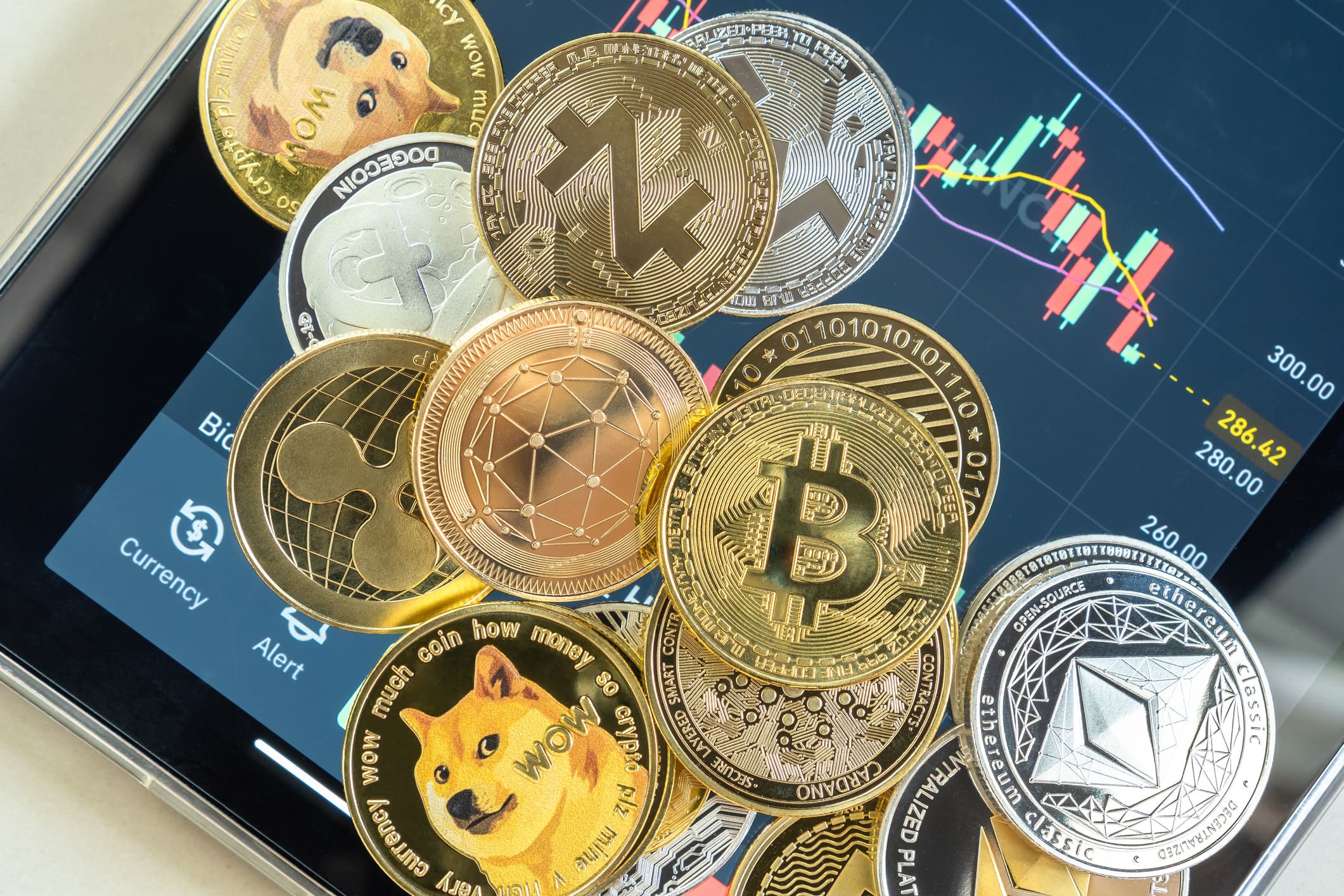
Luna, the native token of the Terra blockchain, is up over 23% in the last seven days, according to CoinGecko.
Now ranked No. 9 among the top cryptocurrencies by market value, Luna hit an all-time high on Sunday of over $103 and is currently trading at around $97. Luna started the year priced below $1.
“It has been on an absolutely spectacular run,” Matt Hougan, chief investment officer at Bitwise Asset Management, tells CNBC Make It. “It’s been largely impervious to the recent market volatility, falling less and recovering faster than its peers.”
Despite the hype around Terra and its token Luna, it’s important to research and understand the risks before investing since financial experts view cryptocurrencies as volatile, speculative investments. As quickly as one reaches a new high, it could go back down.
What’s Terra?
Created by start-up Terraform Labs and its co-founders Do Kwon and Daniel Shin in 2018, the Terra blockchain underpins a decentralized finance (DeFi) ecosystem that creates algorithmic stablecoins. Stablecoins, or cryptocurrencies pegged to reserve assets like the U.S. dollar, are frequently used in DeFi applications like lending or borrowing.
“Terra is the hot dot among the cool kids in crypto right now,” Hougan says. “People love the team behind Terra, and they love all the various applications being built on it right now.”
With nearly $18 billion in total value locked, Terra recently became the second-largest DeFi protocol behind Ethereum, according to data provider DeFi Llama.
According to its white paper, Terra operates on a proof of stake model, where validators verify transactions according to how many coins they hold. Proof of stake supporters say it is significantly less energy intensive than other models and has less of an environmental impact.
Luna’s holders are granted governance rights and voting power for the protocol, since Luna is Terra’s native token. But investors should understand that Luna is also used to regulate Terra’s stablecoin pegs, which means that Luna is “in the center of the shock absorption process if something goes wrong with the stablecoins on the Terra platform,” Hougan says. That can be a risk of buying.
What are the risks?
Generally, financial experts warn to only invest as much as you can afford to lose in all cryptocurrencies due to their risks. The potential for large price swings should be considered and understood before investing.
When it comes to Luna specifically, “the bigger risk” is that investors could be subject to losses if Terra’s stablecoins are unable to hold their pegs, Hougan says. Luna acts as a sort of volatility absorption mechanism for Terra’s stablecoins, so Luna’s performance may correspond with that of Terra’s stablecoins, he says.
Though Terra’s stablecoins, including dollar-pegged UST, are performing well now, it’s impossible to predict the future performance of any asset and whether it will be able to withstand high volatility or a bear market.
In addition, it’s important for investors to be aware of any regulatory issues within a protocol.
The U.S. Securities and Exchange Commission (SEC) is currently investigating Terraform over whether it is selling unregistered securities. This subpoena is related to Terraform’s Mirror Protocol, which offers synthetic versions of stocks, and not the Terra protocol itself.
How does it compare to Ethereum?
Due to its stablecoins, Terra is “gearing up to be a serious Ethereum competitor,” Hougan says.
Terra has offered incentives to attract investors to its DeFi ecosystem and increase demand for UST. But Terra will need to see “continued user growth and adoption, even after incentives have dried up, to really compete with Ethereum more broadly,” he says.
Ethereum is the largest DeFi protocol with over $162 billion in total value locked, according to DeFi Llama. The Terra ecosystem has 13 DeFi protocols built on it, while Ethereum has 373.
It’s still “early” for Terra, Hougan says, “but exciting.”
Sign up now: Get smarter about your money and career with our weekly newsletter
Don’t miss: Why this mom quit her job to focus on crypto full time and build ‘generational wealth’




